Published Mar 19, 2013
Starlogging With David McDonnell
Starlogging With David McDonnell
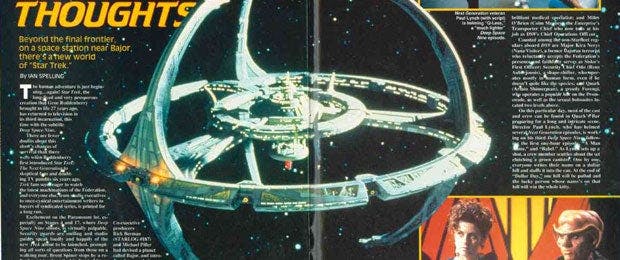
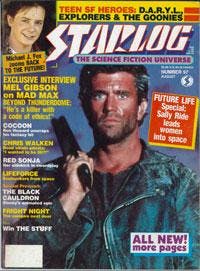
Welcome to the Science Fiction Universe! Table or Booth? Starlog, the pioneering science fiction media magazine, launched in June 1976. Initially, it was intended to be a one-and-done publication entitled Star Trek, focusing solely on the space saga created by Gene Roddenberry. But lawyers intervened to avoid any hassles, and publishers Norman Jacobs and Kerry O’Quinn wisely renamed the magazine and expanded its coverage to the wider arena of SF and fantasy films and TV. So, you see, Starlog’s DNA has always been entangled with Star Trek. That one-shot sold so well that the distributor called up to ask when issue #2 would be available. So, suddenly, there was going to be an issue #2, soon followed by quarterly and then monthly publication. The May 1977 release of Star Wars: A New Hope (cover-featured on an early edition) propelled SF into the mainstream at warp speed and Starlog to more than 30 years of continuous publication (and mixed metaphors).
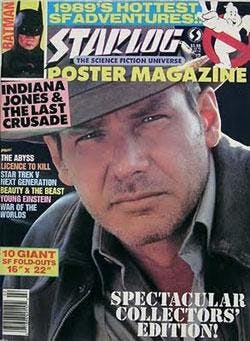
My love for comics (and SF, fantasy, horror, mysteries, Westerns, thrillers, spy flicks, pulp magazines) had led me to this pop culture landscape more than a decade before. How? I wrote letters of comment about comics stories and had several dozen published in various Marvel books (I even won a coveted "No-Prize" for one!). Contributions to fanzines (amateur magazines then printed by photo-offset or ditto publishing) were next up. I wrote (allegedly) humorous satiric fiction, scripts for comic strips illustrated by others, book reviews and media news about comics, SF and fantasy properties becoming movies and TV shows. In 1975, I started doing a similar news column, Media Report, for (what was later known as) The Comic Buyers’ Guide (then with a circulation of 13,000 plus across the U.S.) while a student (West Virginia’s Bethany College, graduate school at Syracuse University)...and then another one, Coming Attractions, at Prevue in 1980... and yet another, Medialog, for Starlog until 2009.
For 31 months, I served as Starlog’s Managing Editor. Then, Howard Zimmerman exited for Byron Preiss Visual Publications and I succeeded him as Editor in April 1985. That gig lasted til December 2009. During all those years, while simultaneously working on Starlog, I served as Editor of Comics Scene (comic books, strips, animation and their creators), Fantasy Worlds (fantasy films and literature) and, for a brief time, Fangoria ("Horror in Entertainment," another subline I originated). Additionally, I edited official movie magazines for the Starlog Group showcasing pictures both great (Aliens, Total Recall, Terminator 2: Judgment Day, Starship Troopers, The Shadow, Willow) and not-so-great (Battlefield Earth, .Wing Commander, Conan the Destroyer, Streetfighter, Superman IV: The Quest for Peace, Masters of the Universe). I also edited several authorized magazines devoted to various Star Trek and James Bond films.
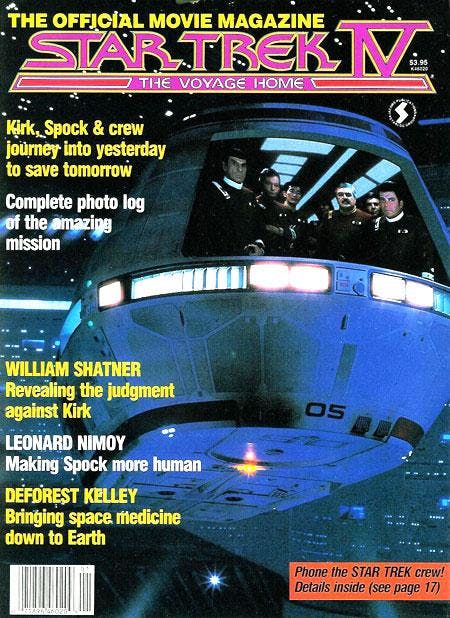
But back to Starlog: "The Science Fiction Universe" (yet another tagline I devised). This online column, Starlogging, harkens back to those days with two kinds of idiosyncratic entries. One is the "Inside Starlog" entry (or entree, as befitting my role as maitre’d of the science fiction universe). In essays like this one, I’ll explore the time I spent at Starlog (masterminding a legion of interviews with the movers and shakers of SF and coverage of hundreds of TV series and films) and just how we created licensed magazines for Trek movies as well as three of the TV shows (The Next Generation, Deep Space Nine, Voyager). These kinds of posts may or may not be interesting to you—so such insider tales will only be occasional offerings.

The other is the "Memory Play." You see, the lifeblood of the magazine feature piece is the anecdote, the funny story (funny as in ironic, humorous or offbeat). Now, here’s the thing -- I’ve tended to live my life as a series of workaholic endurance tests briefly interspersed with bizarre yet true anecdotes. It’s primarily subconscious, but I admit that a few times, I’ve entered into situations where I sorta knew in advance, "Hey, this will make a good story someday." But, mostly, all such incidents were inadvertent.
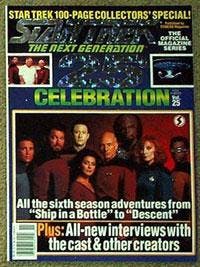
David McDonnell
?Copyright 2013 David McDonnell
